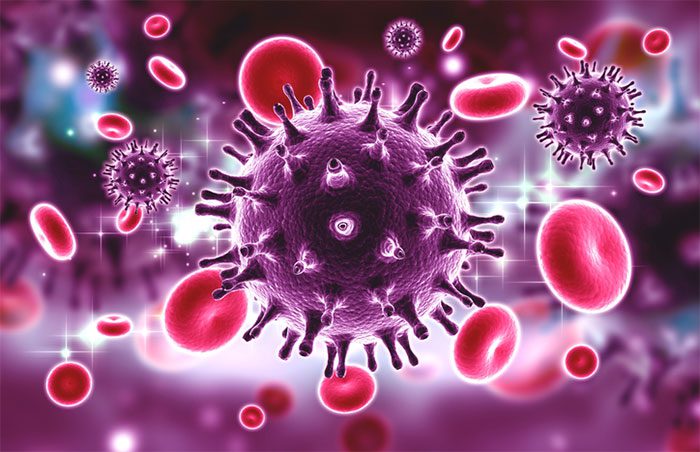BBC News reports that scientists have successfully eliminated the HIV virus from infected cells using the Nobel Prize-winning gene-editing technology, CRISPR, which was awarded the Nobel Prize in Chemistry in 2020.
CRISPR gene editing technology functions like a pair of molecular scissors. This “scissors” can cut DNA and remove or deactivate harmful “components”, including the ability to cut out the HIV virus.
Still Need Thorough Consideration
Currently, HIV treatment drugs can prevent but not completely eradicate the virus. A research team from the University of Amsterdam presented a summary of their preliminary findings at a medical conference, emphasizing that these results are only to demonstrate the feasibility of an idea and will not soon become a method for curing HIV.

Scientists hope to eventually completely eliminate the HIV virus from the body, although many subsequent steps are needed to test whether this method is safe and effective – (Image: Aidsmap).
Scientists hope to ultimately eliminate the HIV virus entirely from the body, although many further steps are necessary to test the safety and efficacy of this method.
Dr. James Dixon, an associate professor of stem cell technology and gene therapy at the University of Nottingham, agrees with this assessment. He believes that comprehensive findings still require thorough examination.
“More work is needed to demonstrate whether the results from these cellular tests can occur throughout the entire body for a future treatment therapy. More development is needed before this method can be applied to people infected with HIV,” Dr. Dixon stated.
Extremely Challenging
Other scientists are also attempting to use CRISPR to combat HIV. The San Francisco-based biotech company Excision BioTherapeutics reported that after 48 weeks of testing, three HIV-infected volunteers did not experience serious side effects.
However, Dr. Jonathan Stoye, a virus expert at the Francis Crick Institute (London), emphasized that removing HIV from all cells that may harbor it in the body is “extremely challenging.”
“Off-target effects of the treatment, with potential long-term side effects, remain a concern,” warned Dr. Stoye.
“Therefore, it seems that it will take many more years before any treatment therapies based on CRISPR technology become mainstream, even assuming the method is proven effective,” he added.
HIV infects and attacks immune system cells, then replicates. Even with effective treatment, some will enter a dormant state. Thus, they still harbor DNA or genetic material of HIV, even when not actively producing new viruses.
Most people infected with HIV require lifelong antiviral medication. If treatment is stopped, the dormant virus may reactivate and cause health issues.
Some rare cases appear to have been “cured” after using cancer treatment therapies to actively destroy certain infected cells, but this approach is never recommended solely for treating HIV.
In 2020, the Royal Swedish Academy of Sciences awarded the Nobel Prize in Chemistry to two female scientists, Emmanuelle Charpentier and Jennifer A. Doudna, for discovering one of the sharpest tools in gene editing technology, namely CRISPR/Cas9.
Diseases utilizing CRISPR/Cas9 are undergoing clinical trials, including cancer, sickle cell anemia, β-thalassemia, and even HIV infection.
CRISPR/Cas9 is a system likened to the immune system of bacteria, designed to combat the invasion of foreign DNA from viruses or other plasmids. Scientists apply CRISPR/Cas9 to design a system that edits DNA in the genome as desired.


















































